COVID Reserves: Preferred Equity Case Study
LSCRE successfully executed preferred equity investments, such as The Sapphire in Houston and an NYC Portfolio in the Bronx and Brooklyn. These investments showcased LSCRE's nimble approach, savvy capital structuring abilities, and conservative approach when few usual opportunities were available.
Shortly after the economic shutdowns associated with the coronavirus pandemic in March 2020, the real estate lending market largely froze. Government sponsored enterprises Fannie Mae and Freddie Mac acted quickly to continue to effectively lend to multifamily owners pursuing acquisition loans and refinancings. Despite tremendous economic uncertainty, Fannie and Freddie found a way to continue to provide liquidity to the multifamily market by requiring what become known as the “COVID reserves”. In addition to lowering leverage across the board, Fannie and Freddie added this additional reserve, which was officially called a “debt service reserve,” to ensure continued loan payments even in the event of pandemic-caused operational shortfalls.
At first, COVID reserves were extensive: up to 18 months’ principal and interest, potentially approaching 10% of the total loan balance. For example, a “75% LTV”loan would only fund 65–70% net proceeds at closing since COVID reserves were held back. Borrowers were left struggling to capitalize projects, and in need of further equity (debt isn’t really an option since the agencies do not allow subordinate debt to be included), which would dilute returns. The result was a stark contrast to the 80% LTV loans prevalent pre-COVID.
LSCRE identified this large gap forming in the multifamily capital structure as an opportunity to provide a unique and much-needed solution. LSCRE created a preferred equity product that lent equity, against the future release of the COVID reserve. Thus, the all-in leverage of the preferred equity position would only equal the fully funded senior loan balance – a conservative position by any measure. As further protection, the preferred equity received a monthly coupon supported by in-place cash flow. Finally, the investment was short-term, since the COVID reserves targeted release in 12 months, assuming stable property performance.
Working with senior lenders, borrower counsel, and our attorneys, we structured the best terms, rights, and remedies for our preferred equity position within the property’s borrower LLC. Not seeing attractive acquisition opportunities ourselves, LSCRE pursued, in our view, the best risk-adjusted return in multifamily: preferred equity, giving equity like returns with debt-like risk.
The Sapphire / Preferred Equity Investment
After losing the bid to acquire The Sapphire, a 248-unit multifamily property in Houston, Texas, the eventual buyer reached out to LSCRE in search of a preferred equity solution to fund the gap created by the COVID reserve. With LSCRE’s Houston expertise and strong understanding of The Sapphire, we moved quickly to execute the transaction in under 45 days. Our $945,000 preferred equity had a last dollar basis of 76.5% LTV which was the lender’s fully funded basis. We negotiated a 13% monthly interest payment while agreeing to cover our transaction costs. The investment was closed on September 8, 2020.
Despite sub-par property performance at The Sapphire, all preferred equity payments were made in full and on time. Eventually, Fannie Mae and Freddie Mac announced the early release of all COVID reserves, allowing full, early payoff of our preferred equity investment on June 18, 2021. While LSCRE and our investors would happily have enjoyed the ongoing 13% monthly coupon, we were equally pleased to go full cycle and redeploy the capital in this improved investment environment, with financing now more favorable at lower interest rates and better loan terms.
NYC Portfolio / Preferred Equity Investment
Shortly after making the Sapphire deal, LSCRE was presented the opportunity to finance a small portfolio in the Bronx and Brooklyn, New York with a similar preferred equity structure, backed by Fannie Mae COVID Reserves. Although we are not experts in New York City multifamily, and pass by it for acquisitions, LSCRE felt comfortable with the economics, structure, and sponsor of the investment. This preferred equity investment featured more financial engineering based returns and bond-like underwriting. LSCRE structured the investment with an upfront 1.5% fee on the $728,392 preferred equity amount, paid at closing, and a 12% monthly interest payment. The deal, featuring a conservative last dollar basis of 73% LTC, closed on October 29, 2020; all monthly payments were made successfully, in full and on time. The investment was paid off on July 14, 2021.
Summary
While preferred equity is not LSCRE's core activity, it exemplifies the firm’s nimble approach, savvy capital structuring abilities, and conservative approach with a pivot in a time that presented few of our usual opportunities. LSCRE continues to identify and originate preferred equity investment opportunities on a very selective basis, where the fundamentals, terms, and sponsor make for a compelling risk-adjusted investment.
You can access the rest of this case study here.
